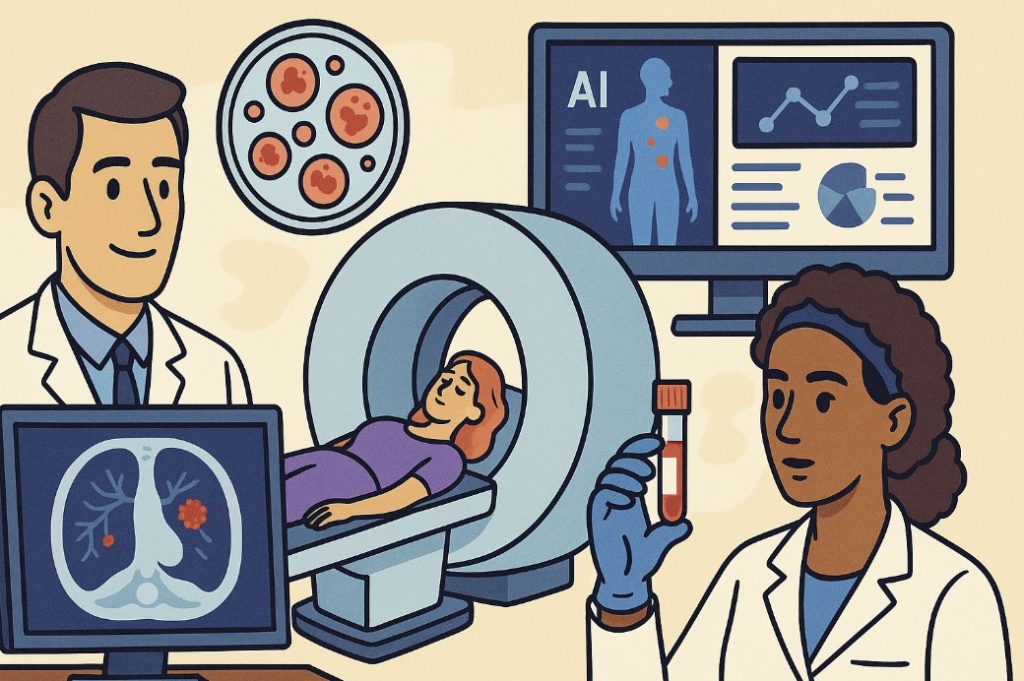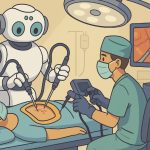Early detection of cancer significantly increases the chances of successful treatment and survival. Thanks to advances in medical technology, we are now better equipped than ever to identify cancer in its earliest stages—often before symptoms appear. But how exactly do these technologies work, and what impact are they having?
Modern Technologies for Early Cancer Detection
1. Imaging and Scanning Technologies
- MRI (Magnetic Resonance Imaging) and CT (Computed Tomography) scans offer detailed internal images, helping doctors detect tumors even in hidden areas.
- Low-dose CT scans are especially effective in detecting early-stage lung cancer among high-risk individuals, such as smokers.
- Mammography is a specialized X-ray for breast cancer screening that can detect changes in breast tissue long before a lump is felt.
2. Liquid Biopsies
A breakthrough innovation, liquid biopsies analyze blood samples to detect circulating tumor DNA (ctDNA) or cancer-related biomarkers. These tests are minimally invasive and can indicate the presence of cancer even when traditional scans show nothing.
3. Artificial Intelligence (AI) in Diagnostics
AI algorithms can analyze imaging scans, pathology slides, and genomic data with high precision:
- AI-assisted radiology tools can spot subtle patterns that may be missed by the human eye.
- Machine learning models trained on large datasets can predict the risk of cancer based on lifestyle, genetics, or even voice patterns.
4. Genetic and Molecular Testing
Genetic screening can identify people with inherited mutations that significantly increase cancer risk (e.g., BRCA1/2 for breast and ovarian cancers).
Molecular profiling of cells helps doctors identify abnormal gene expressions that may lead to cancer growth.
5. Smart Wearables and Apps
Some modern wearables can monitor vital signs and detect anomalies like sudden weight loss or irregular heart rate, which may signal certain cancers.
Smartphone apps are also being developed to track symptoms, provide reminders for screenings, and analyze moles or skin lesions using image recognition.
Real-World Impact
Early detection through advanced technology has already shown measurable benefits:
- Cervical cancer deaths have plummeted in countries with widespread HPV testing and Pap smear usage.
- AI models are now reducing false positives in breast cancer screenings.
- Liquid biopsy trials have detected multiple cancer types before metastasis occurred.
Glossary
- Biomarker – _A measurable indicator of a biological condition or disease.*
- CTDNA – _Fragments of DNA shed by tumors into the bloodstream.*
- BRCA1/2 – _Genes associated with a higher risk of breast and ovarian cancer when mutated.*
- Molecular profiling – _Analysis of gene activity and expression within cells.*
Conclusion
Technology is transforming cancer diagnostics from reactive to proactive. With tools like AI, genetic testing, and liquid biopsies, we are moving toward a future where cancers can be caught early—often before they become life-threatening. The more we invest in these innovations, the better our chances of beating cancer at its source.


